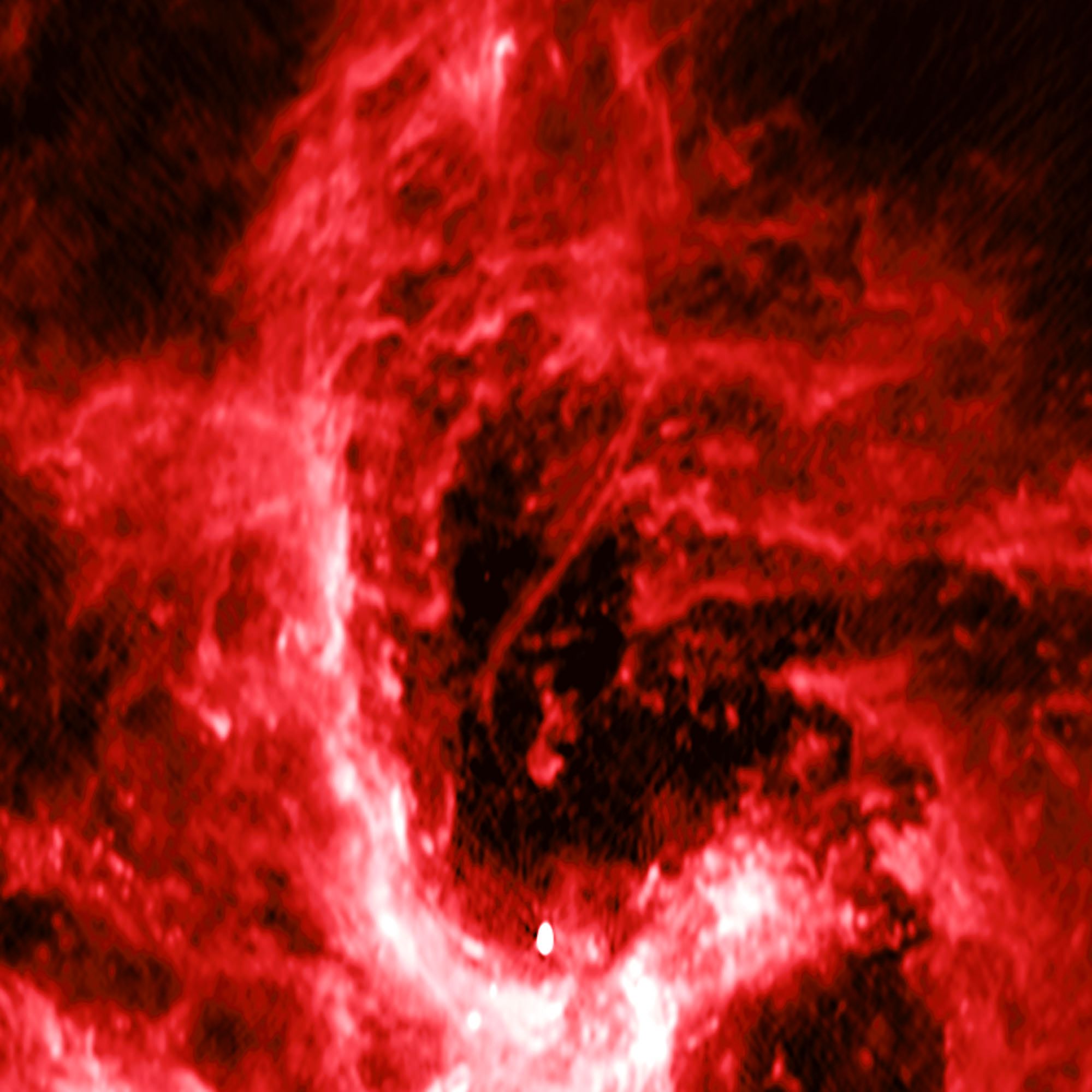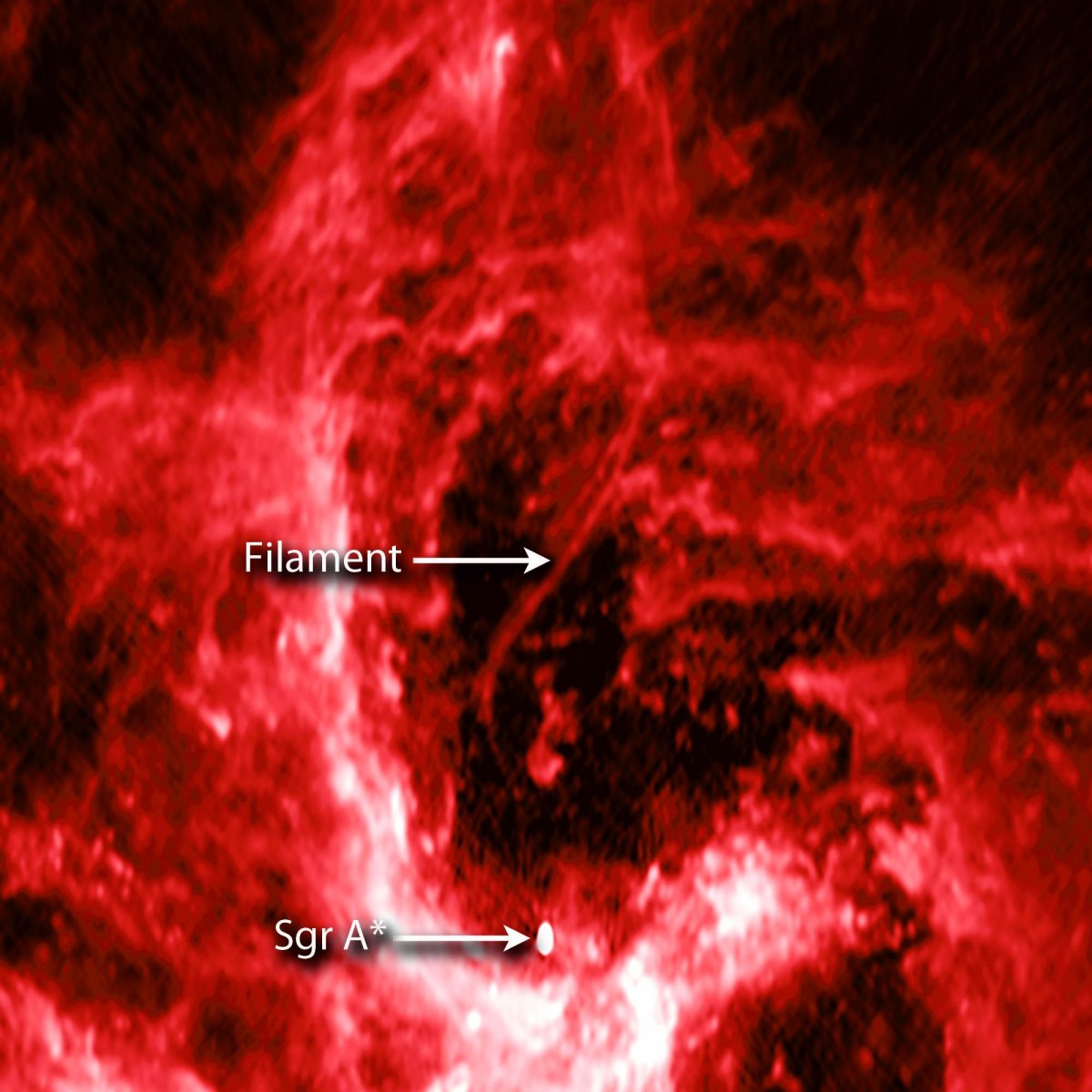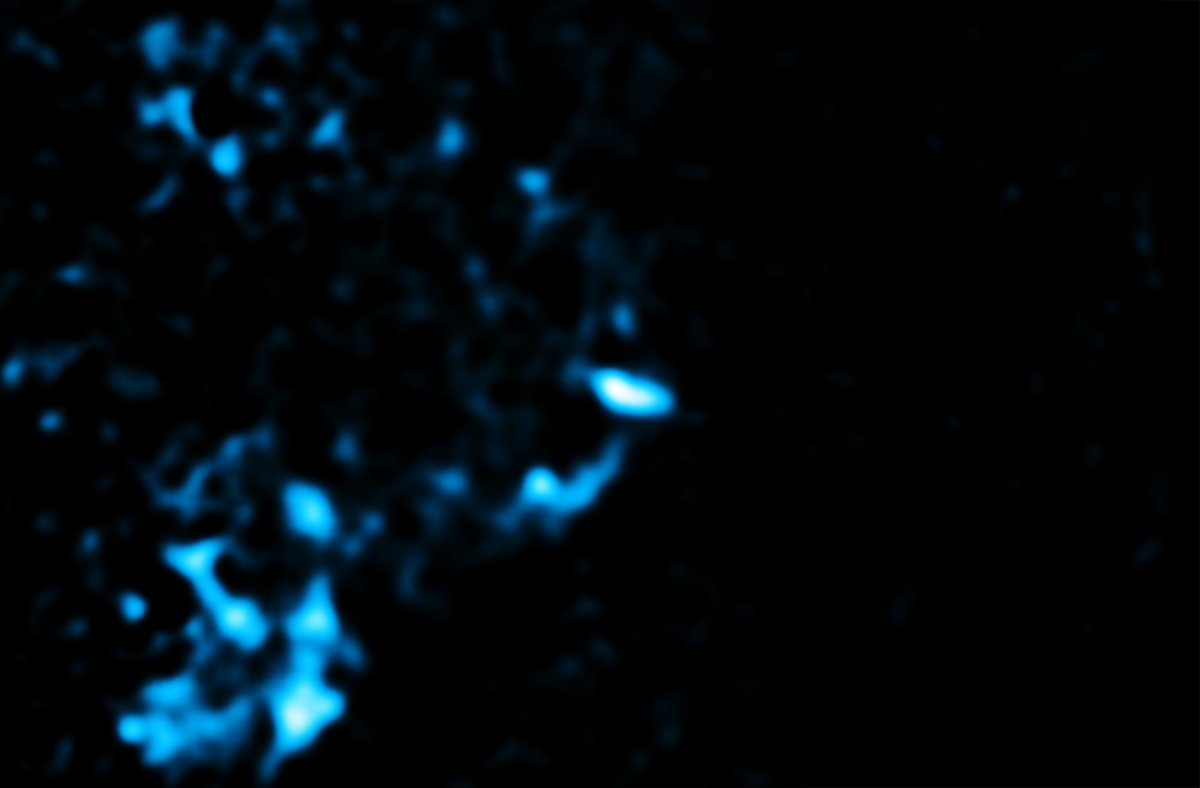
A mysterious cosmic twine cuts through the heart of the Milky Way. The string has baffled astronomers since its discovery in 2016. Now an image with the highest-ever resolution of the strange strand could finally tell astronomers what is behind our galaxy's heartstring.
Stretching 2.3 light years toward the edge of the Milky Way's supermassive black hole, Sagittarius A*, the filament has been captured on camera by the National Science Foundation's Karl G. Jansky Very Large Array.
The images were published earlier this month as part of a paper in The Astrophysical Journal Letters.

"With our improved image, we can now follow this filament much closer to the galaxy's central black hole, and it is now close enough to indicate to us that it must originate there," study author Mark Morris, a professor at the University of California, Los Angeles, said in a press release. "However, we still have more work to do to find out what the true nature of this filament is."
Scientists have three main theories behind the space twine. While other strands have been spotted hovering around the galaxy before, none have been observed skimming the edge of a black hole.
"Part of the thrill of science is stumbling across a mystery that is not easy to solve," said co-author Jun-Hui Zhao, an astrophysicist at the Harvard-Smithsonian Center for Astrophysics. "While we don't have the answer yet, the path to finding it is fascinating. This result is motivating astronomers to build next-generation radio telescopes with cutting edge technology."
Stream of particles
The magnetic field surrounding black holes can produce high-speed streams of particles. Scientists think the cosmic string could be something similar: As the black hole spins, it repels particles, which are then caught in gas spiraling toward the black hole. This produces a magnetic pillar that probes the dark, dead center of the black hole. This cosmic string would be a highly active magnetic tower of accelerating particles.

Scientists can now test for this possibility by looking at the position of the particles. Measuring how much the particles have moved on future photographs allows astronomers to guess just how fast the particles are traveled. Slower particles around the edge of the string could signal this kind of activity.
A new object entirely
A second explanation proposes the string is a new kind of cosmic object. A long, thin trail of mass and electrical current, the string is drifting toward the center of the galaxy. If its tail finally licks the center of Sagittarius A*, it will be gobbled up like a strawberry lace.
Such a theory would force a rewrite of some of science's most fundamental understandings of the universe, from space-time to gravity.
Pure coincidence
The third theory is a little more chaotic. The string has actually nothing to do with the black hole or the center of the galaxy. It is one of potentially many solitary strands, drifting through the galaxy alone.
If this is the case, scientists will need to find out why the string is bending toward the black hole. This strange twist could be caused by a shockwave from a distant exploding star. Astronomers think that, as this sonic boom is lashed by violent cosmic winds from neighboring stars, it warps the string into a curve.
"We will keep hunting until we have a solid explanation for this object," co-author Miller Goss, from the National Radio Astronomy Observatory in Socorro, New Mexico, said in the press release. "And we are aiming to next produce even better, more revealing images."
Uncommon Knowledge
Newsweek is committed to challenging conventional wisdom and finding connections in the search for common ground.
Newsweek is committed to challenging conventional wisdom and finding connections in the search for common ground.
About the writer
Katherine Hignett is a reporter based in London. She currently covers current affairs, health and science. Prior to joining Newsweek ... Read more
To read how Newsweek uses AI as a newsroom tool, Click here.








